TDS Meters Explained: What Exactly Do They Measure?
March 21, 2022
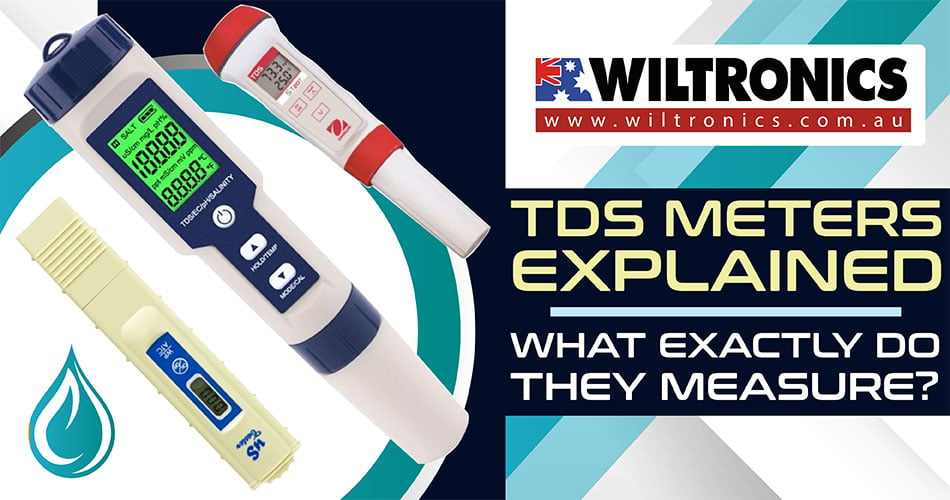
Thanks to the existence of TDS meters, we can now tell if the water we drink is salt- and mineral-free.
Although we may not realise it, various measurement tools help make our lives better and safer. Our previous post about how grain moisture works is a great example.
There, we learned how essential a moisture meter is in many industries. Here, we will uncover what TDS in water is, the uses of TDS meters, and what this tool tells about water quality.
What Is TDS in Water?
Water is a solvent that can dissolve and absorb molecules from various substances. And the number of dissolved particles is called total dissolved solids (TDS).
After rainwater falls to the ground, the minerals present in the rocks and soil are liquified. The dissolved minerals remain in the water at varying concentration/TDS levels. This is a natural process that helps make water taste right by slightly raising the pH.
The most common minerals found in water are calcium, magnesium, and sodium. They can be either organic or inorganic.
Essentially, TDS in water represents the total concentration of dissolved substances. It measures anything ‘thawed’ in water that is not an H2O molecule.
Further, when water encounters soluble material, a reaction occurs. The material particles are absorbed into the water, creating total dissolved solids.
TDS in water can come from just about anywhere, including:
- Natural water springs
- Chemicals used to treat the municipal water supply
- Runoff from roads and yards
- Your home’s plumbing system
Types of total dissolved solids
The following are the common total dissolved solids that may be present in your water:
- Aluminium
- Arsenic
- Bicarbonates
- Calcium
- Chloride
- Chlorine
- Copper
- Fluoride
- Herbicides
- Iron
- Lead
- Magnesium
- Pesticides
- Potassium
- Sodium
- Sulphates
- Zinc
As stated, these minerals can originate from different sources, both natural and due to human activities. For example, mineral springs contain water with a high level of dissolved solids. This is because the water has flowed through a region with high salt content rocks.
On the other hand, they can also come from human activities. Agricultural and urban runoff, for one, can carry excess minerals into water sources.
What Is a TDS Meter?
A TDS meter is a small hand-held device used for indicating TDS in a solution, usually water. It measures the conductivity of the solution and estimates the total dissolved solids from that reading.
What is being measured?
The TDS value gives the sum of dissolved solids in water, which is called the conductivity of the water. TDS meters quantify this conductivity in micro siemens or ppm (parts per million).
A value of 40 ppm means that from one million particles, there are 40 dissolved ions. The rest, the 999 960, are water molecules.
What does TDS not measure?
A TDS meter does not measure contaminants. Thus, it will not tell you if your water is healthy. Instead, the reading refers to the amount of total dissolved solids in your water.
This is why it is important to understand not only the TDS in your water but also what those solids are and if they are harmful to your health. These natural solids include organic materials such as algae.
Why Should You Measure TDS?
A high-level TDS means you have many dissolved solids in your water and there is an indicator of harmful contaminants. This includes iron, manganese, sulfate, bromide and arsenic present in the water.
Over time, this can lead to scale buildup in pipes and appliances, shortening their lifespan and effectiveness. This is also a common reason why many buy mineral water, which has naturally elevated levels of dissolved solids.
Suppose your TDS meter says 100 ppm, which means that from one million particles, 100 are dissolved ions, and 999,900 are water molecules. This would be considered a low TDS level, a suitable and acceptable one.
TDS meter chart:
- Hazardous = 401 to 500 TDS
- Marginal = 301 to 400 TDS
- Average = 201 to 300 TDS
- Good = 101 to 200 TDS
- Ideal = 0 to 100 TDS
TDS Meters and Water Quality
Water with zero ppm does not mean it is free from any pesticides and drug residues. What the TDS meters measure is the number of ions in the water.
Simply put, water with a low ppm value is virtually free from salts and minerals. Yet, it can hide a large cocktail of non-ionic chemicals in itself.
The result of a TDS meter is thus not very meaningful with regard to the actual water quality. The reading is simply a quantitative measure of the amount of dissolved solids in your water.
Water analysis by a reputable laboratory may be better suited to find out about the real water quality. But if you only want to be sure whether you need a salt-free conditioner, we recommend investing in a TDS meter. You might also need a TDS meter for for hydroponics and aquaculture.
Speaking of TDS meters, check out our range of available top-quality units below!
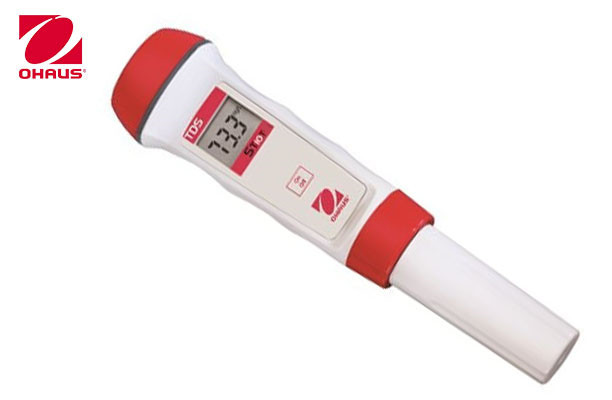
1. TDS Meter Digital 0-100mg/L Ohaus
Product code: ME4350-A
Accurately measure the TDS in your water with this TDS Meter Digital unit. Manufactured by Ohaus, this impressive device can measure between 0-100mg/L.
Even better, it features an automatic shutoff feature and easily replaceable electrodes.
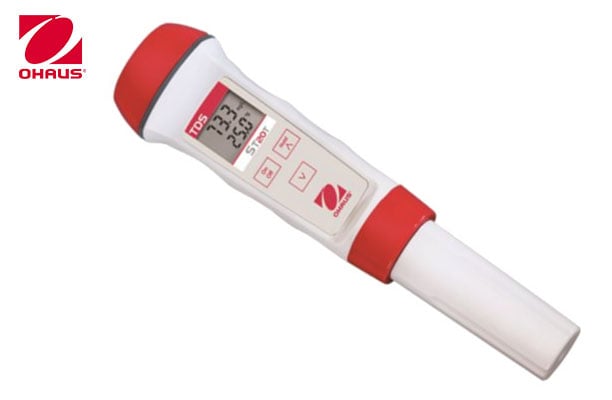
2. TDS Meter Pen with Temperature 0-1000mg/L Ohaus ST20T-B
Product code: ME4352-B
Built by Ohaus, this TDS Pen can measure between 0-1000mg/L and measure temperature. It has an automatic shutoff feature and easily replaceable electrodes.
Note: the temperature range is between 0 °C – 99 °C.
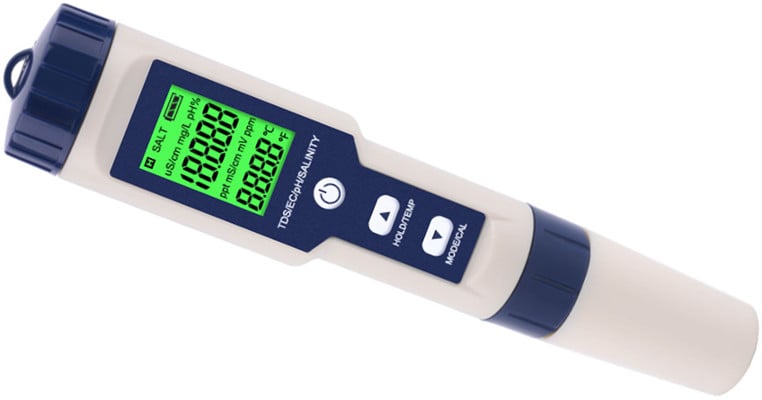
3. Water Quality Tester 5 in 1 – TDS / EC / PH / Salinity / Temp
Product code: ME4326
This remarkable 5 in 1 water quality tester can measure TDS, EC, pH, Salinity and Temperature. A small and lightweight device with a backlight function, and it is IP 67 waterproof grade!
It has low power consumption and will shut down automatically after 5 minutes. Also comes with pH Buffer Powder sachets.
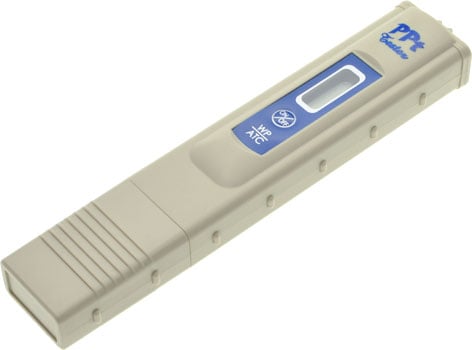
4. TDS Meter Water Quality Tester PPT
Product code: ME4336
A fully waterproof shell with easy controls, perfect for a variety of applications. This TDS Meter also features a long battery life and Automatic Temperature Compensation.
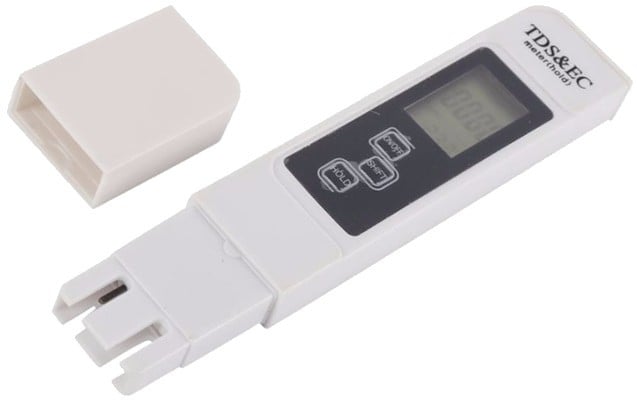
5. 3 in 1 Water Quality Tester
Product code: ME4329
This 3 in 1 Water Quality Tester has an auto-off function that turns off the meter after 5 minutes of inactivity to save batteries. It also has automatic temperature compensation and can shift between TDS and Conductivity.
Plus, it can be used in food (vegetable, fruit) & drink quality monitoring, including pools, spas, aquariums, and hydroponics.
The Bottom Line
The ability to measure solvents like water has tremendous survival value to mankind. This gives us the evolutionary advantage of getting measurements that we could not do on our own.
Among the physical properties for which we have developed accurate measures include:
- Time
- Size
- Distance
- Speed
- Direction
- Weight
- Volume
- Temperature
- Pressure
- Force
- Sound
- Light
- Energy
TDS meters fall under the volume category, whereas grain meters full under the weight category. If you have heard about light meters in photography, it is covered by the light category.
Simply put, a TDS meter can be used to determine if your tap water is salt- and mineral-free. Even so, you should not completely rely on your water’s TDS alone when thinking of getting a water filter.
Use the tool only for getting the quantitative measure of the dissolved solids in your water.
© Wiltronics Research Pty Ltd 2022
Write a Comment
You must be logged in to post a comment.